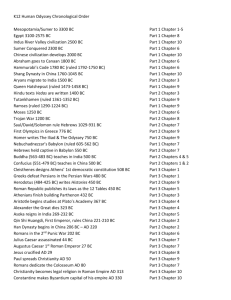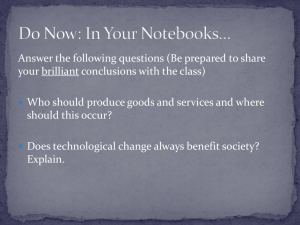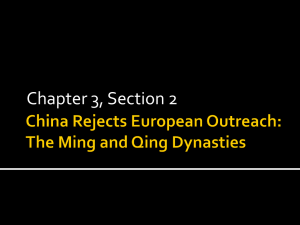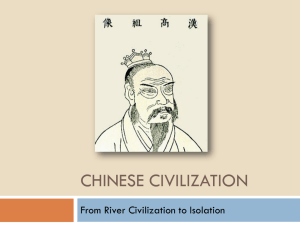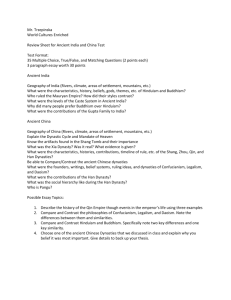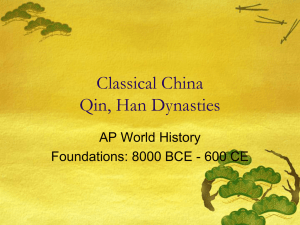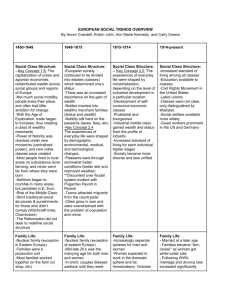classical china and india comparison matrix
advertisement
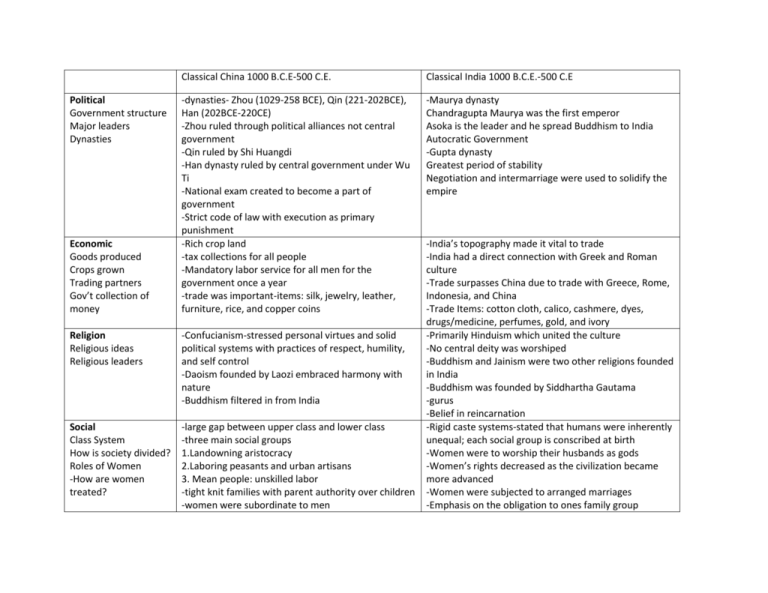
Political Government structure Major leaders Dynasties Economic Goods produced Crops grown Trading partners Gov’t collection of money Classical China 1000 B.C.E-500 C.E. Classical India 1000 B.C.E.-500 C.E -dynasties- Zhou (1029-258 BCE), Qin (221-202BCE), Han (202BCE-220CE) -Zhou ruled through political alliances not central government -Qin ruled by Shi Huangdi -Han dynasty ruled by central government under Wu Ti -National exam created to become a part of government -Strict code of law with execution as primary punishment -Rich crop land -tax collections for all people -Mandatory labor service for all men for the government once a year -trade was important-items: silk, jewelry, leather, furniture, rice, and copper coins -Maurya dynasty Chandragupta Maurya was the first emperor Asoka is the leader and he spread Buddhism to India Autocratic Government -Gupta dynasty Greatest period of stability Negotiation and intermarriage were used to solidify the empire Religion Religious ideas Religious leaders -Confucianism-stressed personal virtues and solid political systems with practices of respect, humility, and self control -Daoism founded by Laozi embraced harmony with nature -Buddhism filtered in from India Social Class System How is society divided? Roles of Women -How are women treated? -large gap between upper class and lower class -three main social groups 1.Landowning aristocracy 2.Laboring peasants and urban artisans 3. Mean people: unskilled labor -tight knit families with parent authority over children -women were subordinate to men -India’s topography made it vital to trade -India had a direct connection with Greek and Roman culture -Trade surpasses China due to trade with Greece, Rome, Indonesia, and China -Trade Items: cotton cloth, calico, cashmere, dyes, drugs/medicine, perfumes, gold, and ivory -Primarily Hinduism which united the culture -No central deity was worshiped -Buddhism and Jainism were two other religions founded in India -Buddhism was founded by Siddhartha Gautama -gurus -Belief in reincarnation -Rigid caste systems-stated that humans were inherently unequal; each social group is conscribed at birth -Women were to worship their husbands as gods -Women’s rights decreased as the civilization became more advanced -Women were subjected to arranged marriages -Emphasis on the obligation to ones family group -Marriages were arranged for women by their parents -women had some power during religious rituals and their daughters -a person does not interact with someone outside of their caste Intellectual/Inventions New ways of thinking about government or life New technology created New literature/writing -Mandarin standard language -Confucianism -Standards weights and measures -Emperor Wu Ti created a school to train men for the exam -Seismograph to detect earthquakes -emphasis on hygiene -Legalism -accurate calendars -math of music -During Gupta dynasty in Nalanda they taught religion, medicine, and architecture -Concept of zero in math -Arabic numerals -Decimal system -Ramayana, Vedas, Sanskrit writing, and Upshanidas Art New art forms created -writing styles -painting -sculpting -architecture -Great wall of China was built by Shi Huangdi -Chinese art was largely decorative stressing detail and craftsmanship -Artistic styles often reflected geometric qualities of the symbols of writing -Complex irrigation and canal system -Painting-Bronze painting and pottery -Calligraphy -Indian artist created shrines called stupas painted in bright colors -Religious temples Reasons for decline -Weak dynasties stressing alliances rather than a central government -decrease in tax revenue -social division-unrest between the inequalities in each social class -not enough resources due to overpopulation -internal rebellions -outside invasion-invaded by the Huns -India was set apart from the rest of Asia giving it a geographic advantage -there was not a system of rising and falling but consisted of invasion through the northwestern mountain path -invaded by the Kushans

